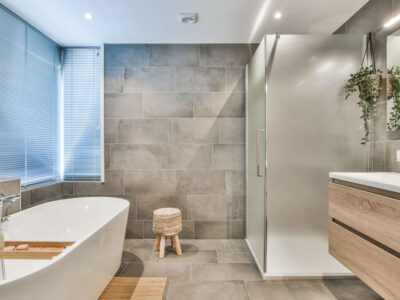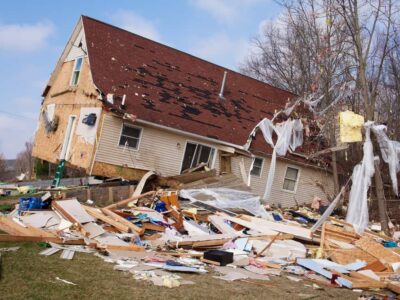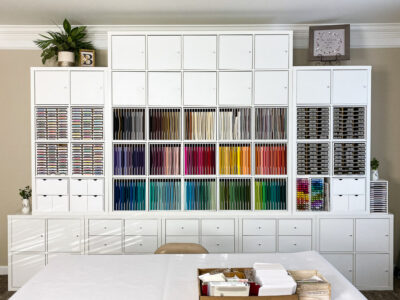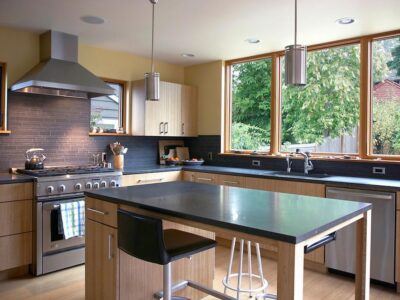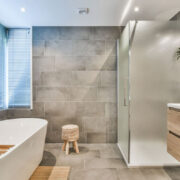
Architecture is alive and continually evolves like life’s many facets. The drivers of its ever-changing nature are the needs of people and their developing taste. New materials, technologies, and trends stir the direction of architectural designs, and it’s always exciting to see what’s new.
People consume most of their time in commercial places, so they are essential. The architecture of commercial buildings is evolving to allow both aesthetic and functional improvements. These are a few of the most popular commercial building design and architecture trends:
Multifunctional Designs
This trend must be the primary focus of any successful developer. The current craze aims to create multipurpose and multifunctional architectural elements. These designs integrate seamlessly in commercial, residential, leisure, and workplaces. This trend has to do with the fast-paced lifestyle and the urge to receive as much service as possible while conserving effort and time. It indicates that it is not a one-year fad but rather a constant need from developers and customers.
The development of the multifunctionality trend is turning into a redevelopment. There is a severe lack of construction space in current metropolitan cities. Worldwide, abandoned warehouses, factories, and depots are under renovation and repurposed into residential flats, commercial and recreational centers, and public spaces.
More Light and Outdoor Space
Utilizing patios and roofs turn these spaces into usable facilities to meet the need for additional outdoor space. More organizations seek outdoor areas where individuals may gather for various activities like sharing meals or shared break rooms. People have become more aware of the need for light and outdoor space to unwind and boost productivity.
Companies need to consider employee wellbeing. Green areas, large skylights, and acoustic insulation are becoming increasingly important to businesses. Because it promotes wellbeing, people working in locations with lots of light and plants are more productive. Following the Covid-19 pandemic, enterprises are experiencing a surge in commercial building designs that incorporate more open areas. Employees can also feel protected in work environments that have enough ventilation.
Sustainable Designs
The influence of the green building trend is something that commercial construction designers are conscious of and keen on exploring. Sustainable designs include waste-reducing components, long-lasting and robust materials to avoid the necessity of regular replacement, which results in more wastes, which have a lower environmental effect.
Sustainable buildings conserve energy by making the most effective use of space as part of their intrinsic design. These architectural designs optimize ventilation, lighting, and electricity while also taking advantage of what is available in the surroundings to reduce energy consumption. Energy optimization aids in power conservation, which is beneficial to the environment.
Intelligent waste management technologies are also a key component of today’s commercial building designs. Recycling is an essential element of waste management since it helps to reduce pollution.
Open Interior Spaces
Shared open areas are becoming increasingly prevalent in architectural design. Many of these spaces will feature comfortable seating, natural light, be soundproof, which can be outside or inside. Some people can continue working in this setting without distraction from team tasks in the collaboration room.
Commercial buildings conceal essential utility areas to open up more spaces so that the public wouldn’t notice but still be accessible for personnel to do maintenance work. They install hanging ceilings, raised floors, or general-purpose insulated access panels to hide all the wires, plumbing, or critical control mechanisms so that the site’s aesthetics remain seamless.
Biomimicry
Biomimetics or biomimicry imitates natural structures, processes, and aspects to address complex human issues. It’s a technique that takes cues from and mimics the methods employed by living animals. The purpose is to develop processes, products, and policies that address our most pressing design concerns in a sustainable and respectful sense to all species on the planet.
Modern commercial building spaces integrate some biomimicry because of their design advantages. The most useful one is how effectively it regulates heating and cooling. With the push to a more sustainable and energy-efficient design, there will be more of this design in the future, and other concepts will revolve around it.
Innovative Solutions
Commercial building designs embrace functional improvements that will make the workspace more effective as technology advances. Increasingly technological-based alternatives, such as motion-detecting lighting that only turns on when there is someone in the room, are becoming more popular. People may use motion-detecting entrances and voice-activated elevators to reach public areas without touching them.
Takeaway
Trends are constantly changing depending on the demand. Fortunately, more people are now taking a more responsible construction design fueling the demand for environmentally friendly and energy-efficient solutions. By consulting a credible licensed professional, you’ll be able to have more information about how you can apply this trend to your commercial space.



